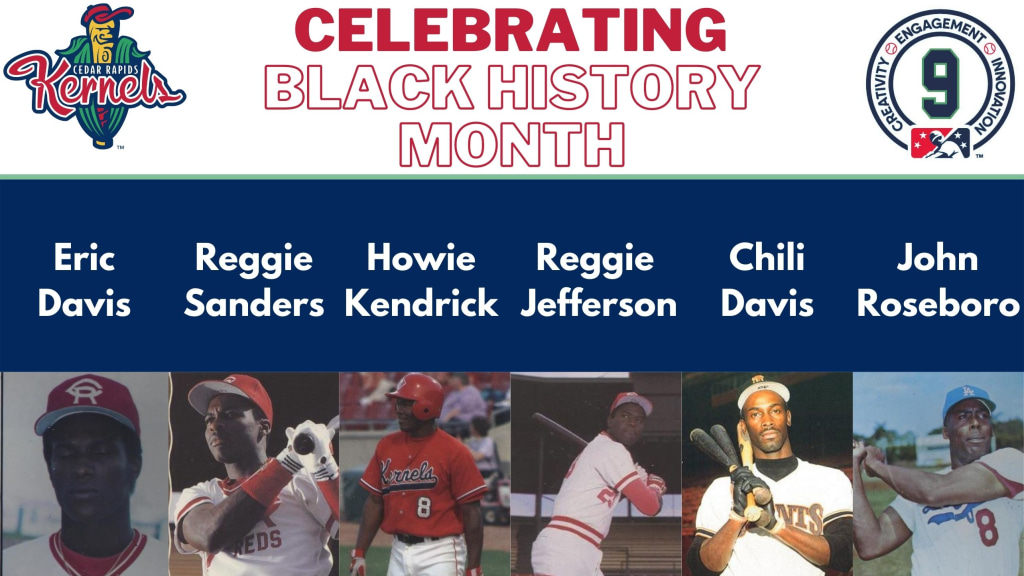
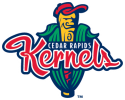 In celebration of Black History Month, throughout February, teams across Minor League Baseball are taking a look back at six of the best Black players to suit up for their club.
In celebration of Black History Month, throughout February, teams across Minor League Baseball are taking a look back at six of the best Black players to suit up for their club.
While some of these standout performers went on to long and illustrious Major League careers, others simply had great Minor League careers or, in some cases, just one incredible season that went down as “a year for the ages.”
Here is a look at six of the best Black baseball players ever to suit up for the Cedar Rapids Ball Club.
Eric Davis:
Drafted in the 8th round of the 1980 MLB draft by the Cincinnati Reds. Eric Davis played in 111 games for the Cedar Rapids Reds in 1982. Eric hit .277 with 15 home runs, 56 RBIs, and stealing 53 bases.
Eric debuted with the Cincinnati Reds in 1984. Eric became a member of the 30/30 club in 1987, hitting 37 home runs and stealing 50 bases. Eric was a key member of the Reds 1990 World Series Championship team. Over his 17-year career Eric was a .269 hitter with 282 home runs and 349 stolen bases. The two-time All-Star also won three Gold Gloves.
Reggie Sanders:
The Cincinnati Reds used their 7th round pick in the 1987 draft on Outfielder, Reggie Sanders. Reggie played for Cedar Rapids in 1990, playing in 127 games. Reggie hit .285 with 17 home runs, 63 RBIs and 40 stolen bases.
Reggie debuted with the Reds in the 1991 season playing in just 9 games. In the 1992 season Reggie finished 4th in the Rookie of the Year voting. Reggie was part of the 2001 Arizona Diamondbacks team that would win the World Series. In total Reggie played for 8 big league teams over 17 seasons. A career .267 hitter with 305 home runs and 983 RBI’s. Reggie has 1666 career hits and 304 Stolen Bases.
Howie Kendrick:
The Anaheim Angels drafted Howie Kendrick in the 10th round in 2002. Howie played 75 games for the Cedar Rapids Kernels in 2004 and he did not disappoint. Howie hit an incredible .367 over those 75 games.
Howie would make his MLB debut in 2006 and would enjoy a 15-year career. His only All-Star appearance came in 2011, but his best season was in 2019 when he helped lead the Nationals to the Franchises first World Series title. The NLCS MVP hit a career high .344 in 121 games with 17 home runs during the regular season. Howie recently retired after the 2020 season, as a career .294 hitter with 1747 career hits to his name.
Reggie Jefferson:
Reggie Jefferson was a first baseman out of Lincoln High School in Tallahassee, Florida. The Reds would draft him in the 3rd round in 1986, he would play 15 games in Cedar Rapids in 1987 and would return for a full season in 1988. Reggie blasted 18 home runs and drove in 90 runs during the ’88 season.
Reggie Debuted with the Reds in 1991 but would only play in five games before being traded to Cleveland. Over his 9-year big league career Reggie would average 17 home runs 71 RBIs. He finished his career with a batting average of exactly .300. Reggie would also spend some time playing in Japan, as well as coaching in the Minor Leagues and College level.
Chili Davis:
Born in Jamacia, Chili Davis was drafted in the 11th round by the Giants out of High School in 1977. He would play in 124 games for the Cedar Rapids Giants in 1978. That year Chili hit .281 with 16 home runs, 73 RBIs and 15 stolen bases. He was a Midwest League All-star and named the team MVP.
In 1981 Chili made history, being the first Jamaican born player to reach the big leagues. He would finish 4th in the Rookie of the Year votes in 1982 and would spend 19 years as a player in the big leagues playing for 5 teams. Chili would be on three World Series Championship teams (Minnesota 1991, New York Yankees 1998-99). A .274 career hitter with 2380 hits and 350 home runs. After retiring as a player Chili would go on to be a coach making stops in Oakland, Boston, Chicago (Cubs), and New York (Mets).
John Roseboro:
John played for the Cedar Rapids Raiders (Brooklyn Dodgers) in 1955 where he played in 55 games. John hit .235 that year but was better known for his defense.
He would make his MLB debut in 1957, playing in 35 games. The next season he would take over full time catching duties for the Dodgers after Roy Campanella was seriously injured in a car accident. John made his first of six All-Star teams that year. John was known as one of the best defensive catchers in baseball during his 14-year career. He would win two Gold Gloves and win 3 World Series titles. Following his retirement John would coach for the Senators, Angels, and Dodgers in both the Major and Minor Leagues. John passed away in 2002 at the age of 69.

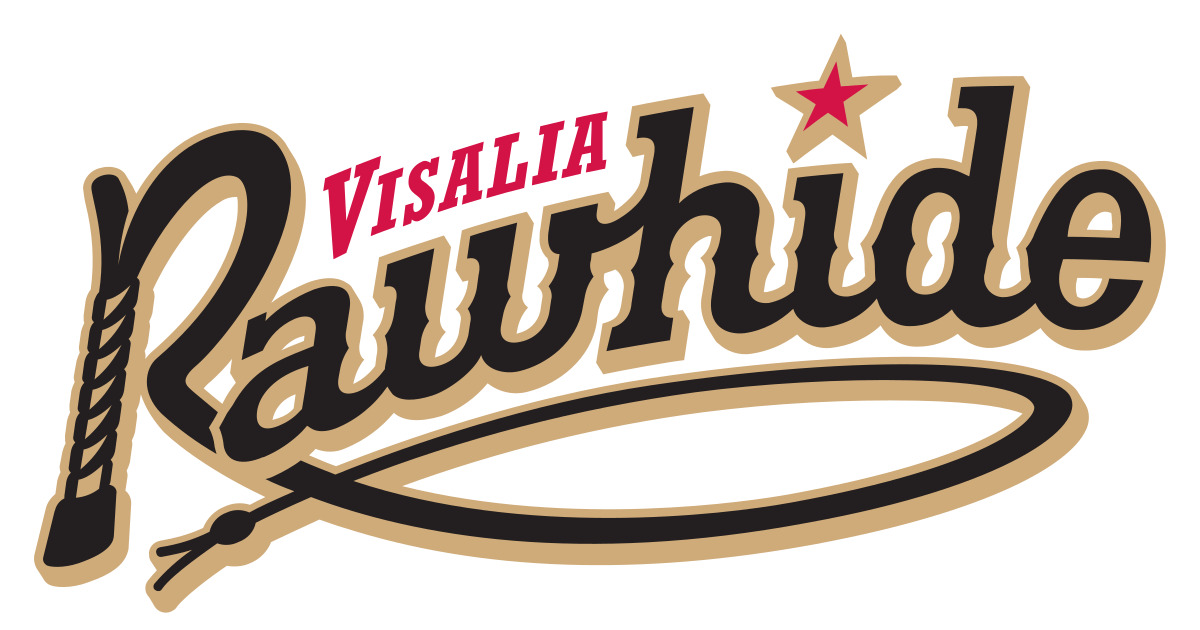
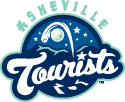 ASHEVILLE- In celebration of Black History Month, throughout February, teams across Minor League Baseball are taking a look back at five of the best Black players to suit up for their club.
ASHEVILLE- In celebration of Black History Month, throughout February, teams across Minor League Baseball are taking a look back at five of the best Black players to suit up for their club.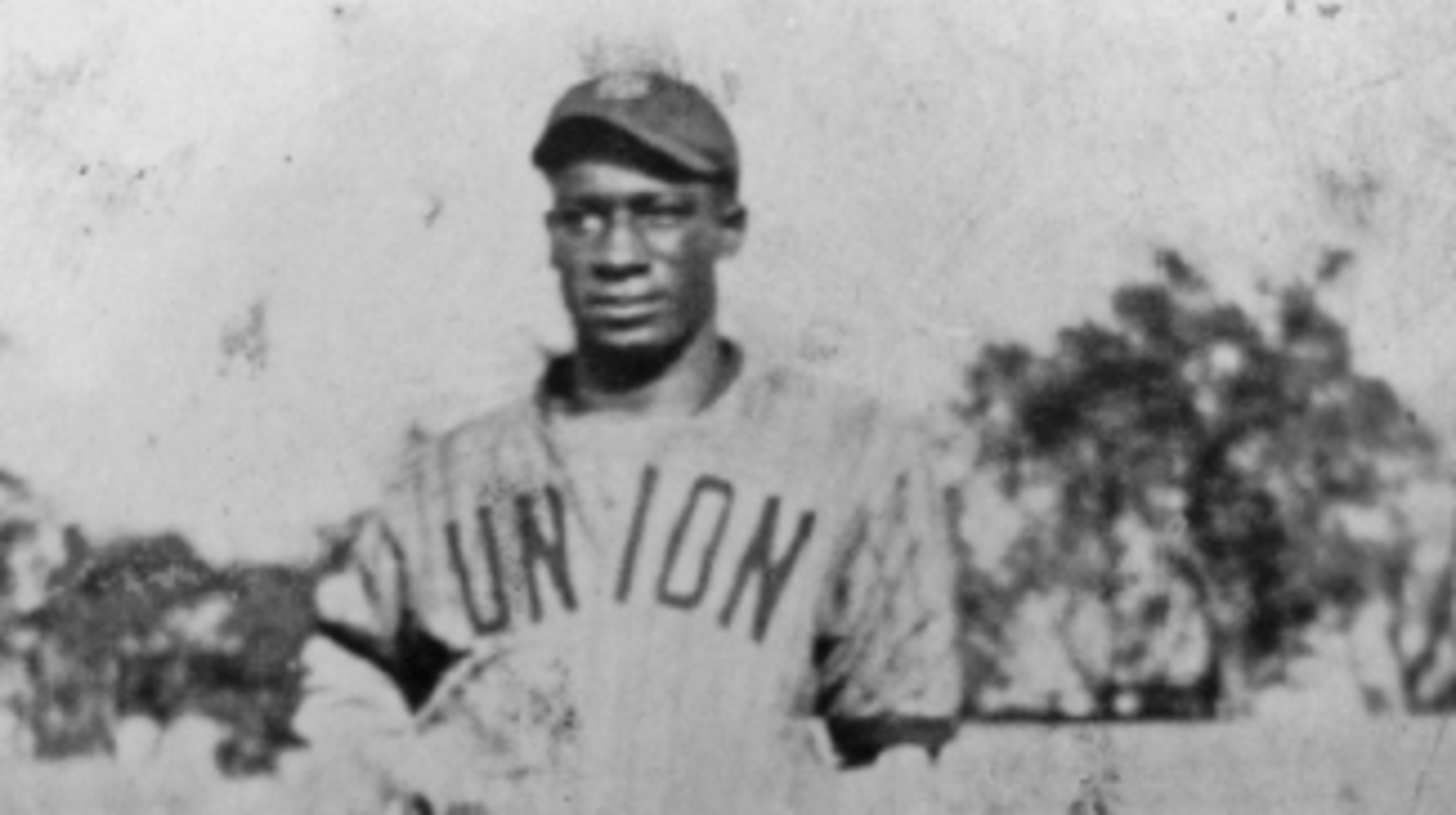
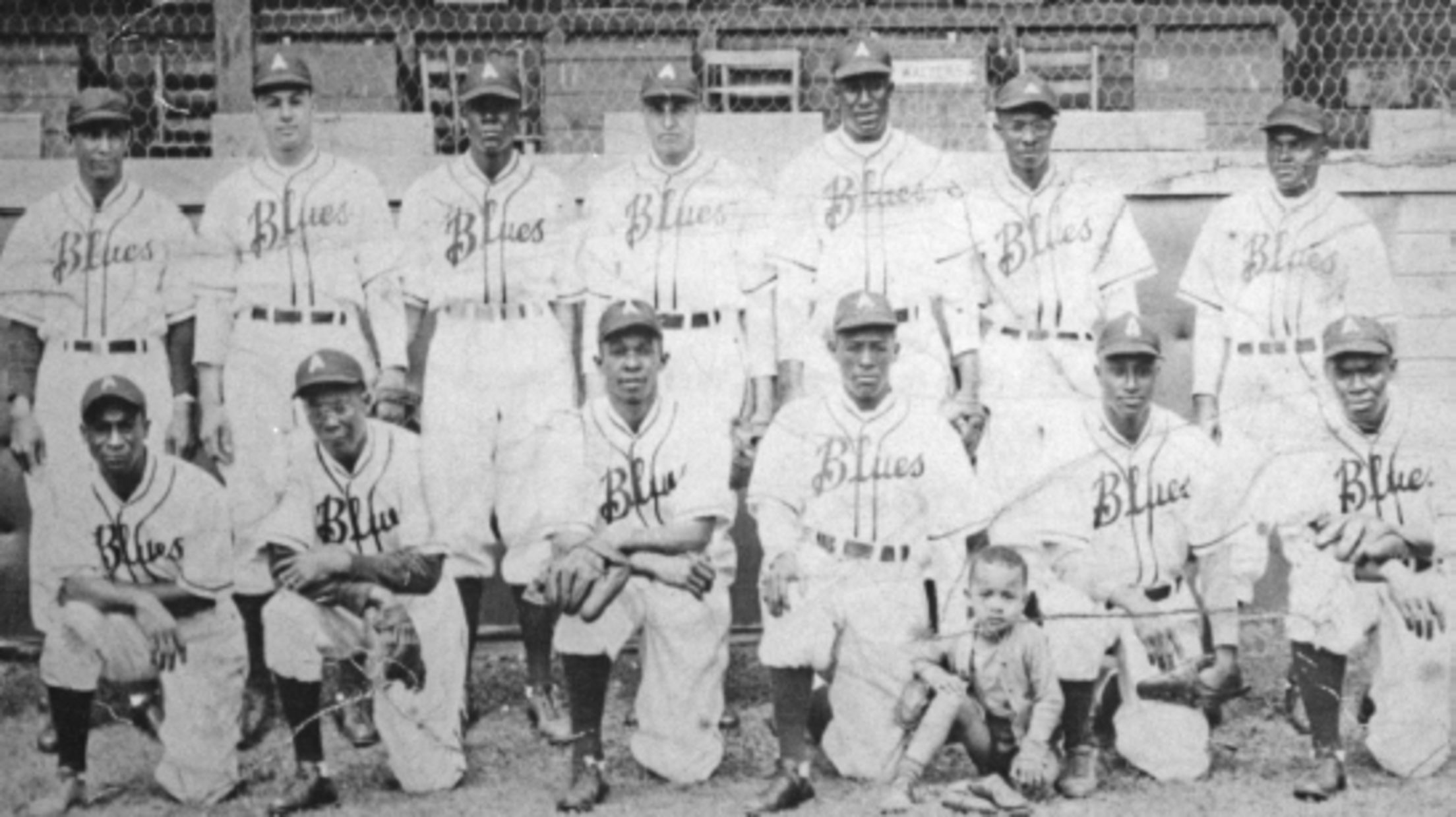
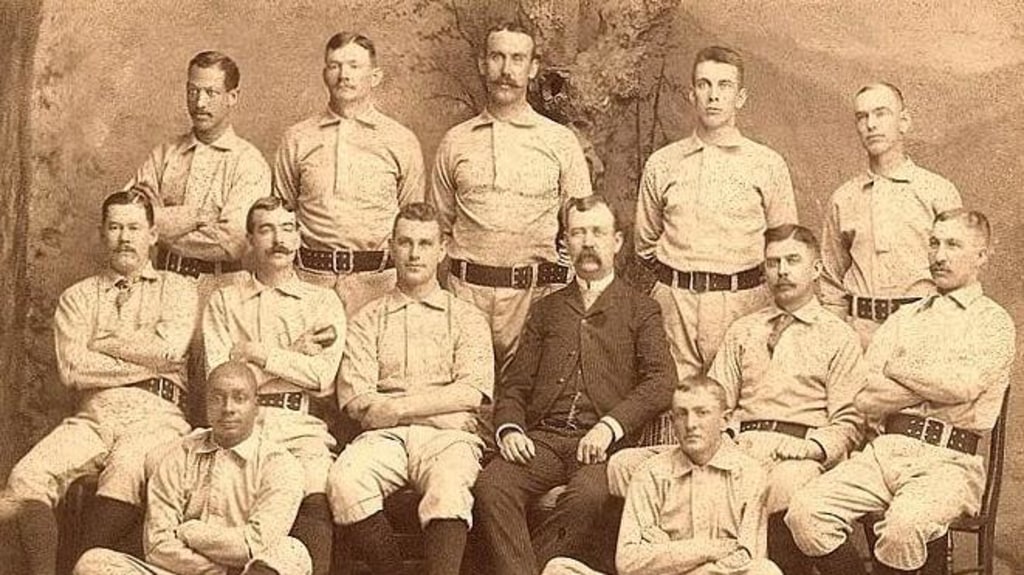
 In celebration of Black History Month, throughout February, teams across Minor League Baseball are taking a look back at some of the most significant Black players to suit up for their club.
In celebration of Black History Month, throughout February, teams across Minor League Baseball are taking a look back at some of the most significant Black players to suit up for their club. In celebration of Black History Month, throughout February, teams across Minor League Baseball are taking a look back at five of the best Black players to suit up for their club.
In celebration of Black History Month, throughout February, teams across Minor League Baseball are taking a look back at five of the best Black players to suit up for their club.




 In celebration of Black History Month, throughout February, teams across Minor League Baseball are taking a look back at five of the best Black players to suit up for their club.
In celebration of Black History Month, throughout February, teams across Minor League Baseball are taking a look back at five of the best Black players to suit up for their club.



 In celebration of Black History Month, throughout February, teams across Minor League Baseball are looking back at five of the best Black players to suit up for their club or play for a team within its market.
In celebration of Black History Month, throughout February, teams across Minor League Baseball are looking back at five of the best Black players to suit up for their club or play for a team within its market.



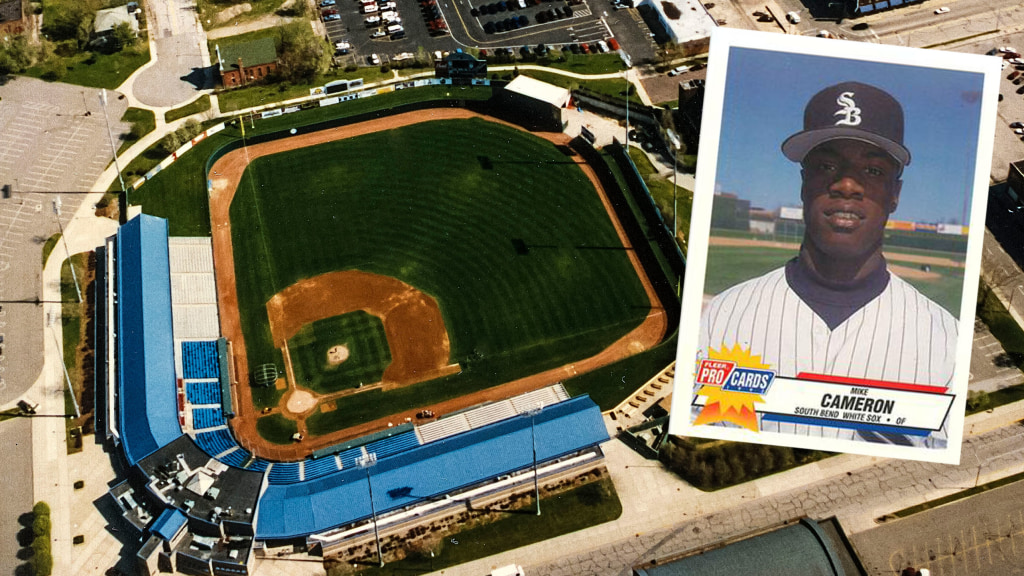
 South Bend has a long history of getting players to the big leagues and in honor of Black History Month and Minor League Baseball’s “The Nine” initiative (which is a Black-community focused outreach platform designed to honor and celebrate the historic impact of Black baseball pioneers made on the sport) here’s our look at the top five Black players in our franchise history to make it to the MLB.
South Bend has a long history of getting players to the big leagues and in honor of Black History Month and Minor League Baseball’s “The Nine” initiative (which is a Black-community focused outreach platform designed to honor and celebrate the historic impact of Black baseball pioneers made on the sport) here’s our look at the top five Black players in our franchise history to make it to the MLB.
 In celebration of Black History Month, throughout February, teams across Minor League Baseball are taking a look back at five of the best Black players to suit up for their club.
In celebration of Black History Month, throughout February, teams across Minor League Baseball are taking a look back at five of the best Black players to suit up for their club. In celebration of Black History Month, throughout February, teams across Minor League Baseball are looking back at some of the best Black players to suit up for their club.
In celebration of Black History Month, throughout February, teams across Minor League Baseball are looking back at some of the best Black players to suit up for their club.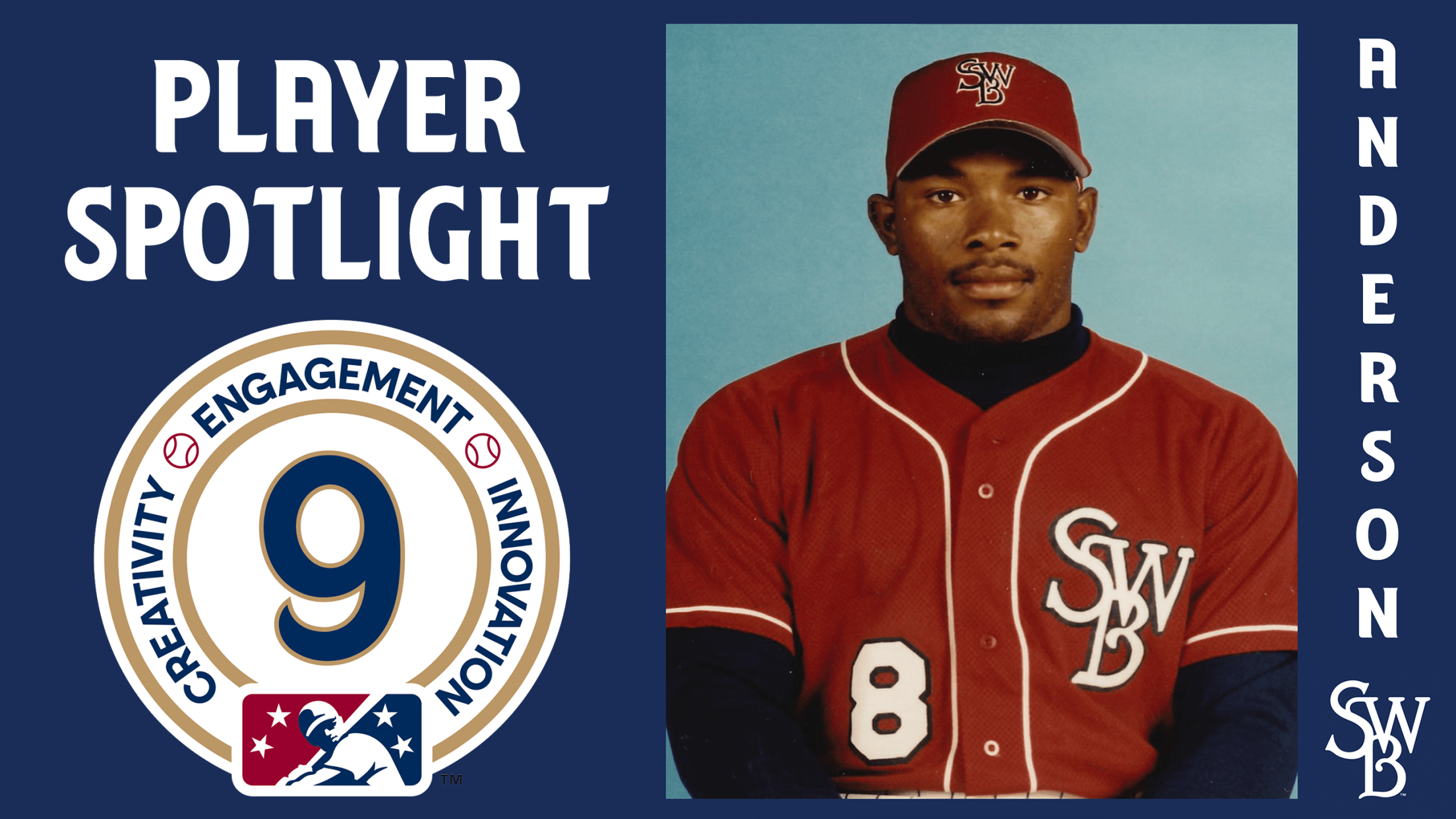
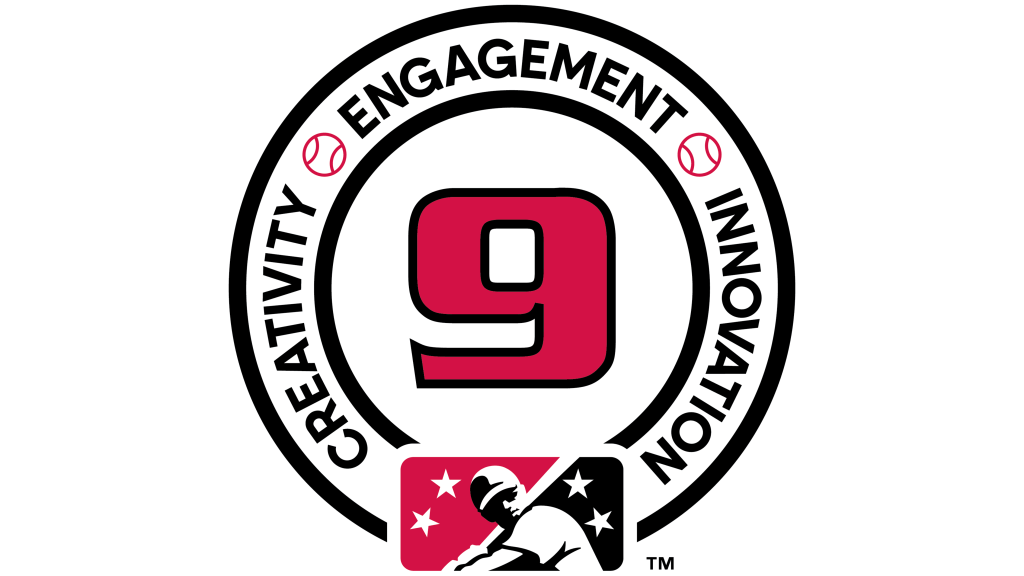
 Minor League Baseball has announced the launch of “The Nine,” a new, Black-community focused outreach platform specifically designed to honor and celebrate the historic impact numerous Black baseball pioneers made on the sport. It’s named for the number Jackie Robinson wore during his only season playing in MiLB with the Triple-A Montreal Royals in 1946. The Albuquerque Isotopes will look back at the rich history of Black ballplayers in the Duke City by highlighting the Top Nine over various eras.
Minor League Baseball has announced the launch of “The Nine,” a new, Black-community focused outreach platform specifically designed to honor and celebrate the historic impact numerous Black baseball pioneers made on the sport. It’s named for the number Jackie Robinson wore during his only season playing in MiLB with the Triple-A Montreal Royals in 1946. The Albuquerque Isotopes will look back at the rich history of Black ballplayers in the Duke City by highlighting the Top Nine over various eras.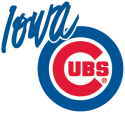 In celebration of Black History Month, throughout February, teams across Minor League Baseball are taking a look back at some of the best Black players to suit up for their club.
In celebration of Black History Month, throughout February, teams across Minor League Baseball are taking a look back at some of the best Black players to suit up for their club.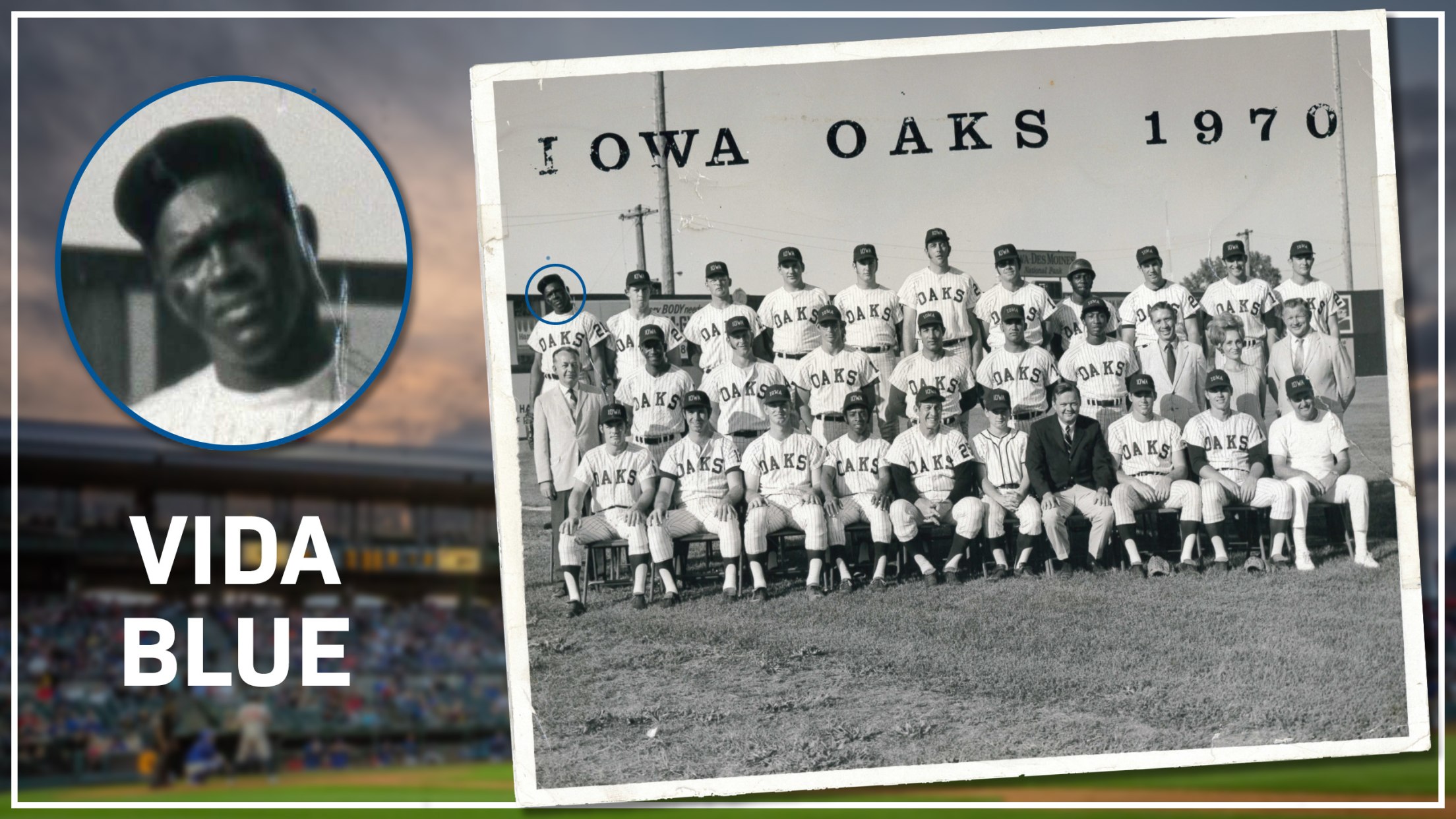

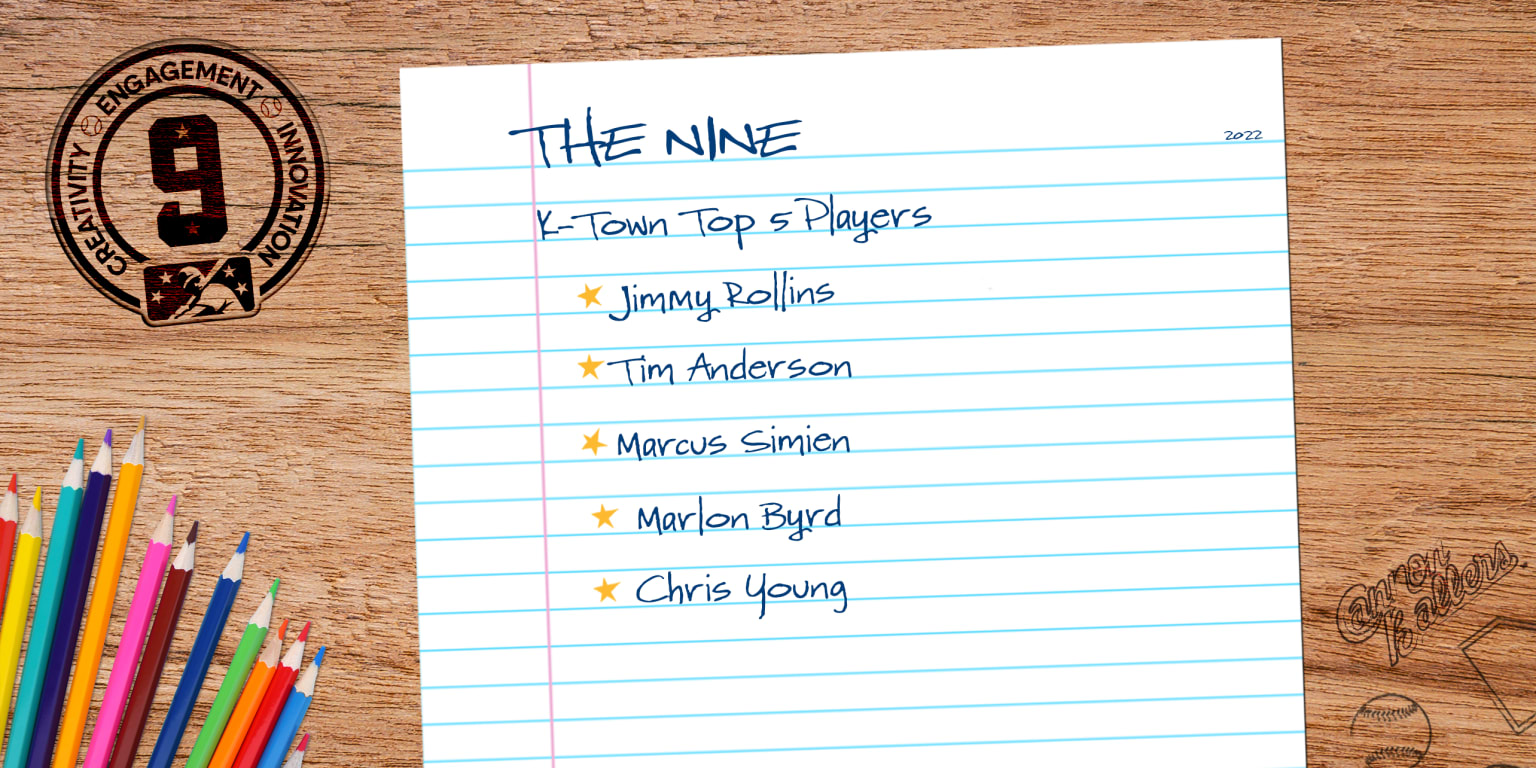
 To honor one of the world’s greatest trailblazers, Hall of Famer Jackie Robinson, the Cannon Ballers have created a list of the Top 5 Black Minor League Baseball players that have ever worn a jersey in Kannapolis. Making its debut in 2022, MiLB announced that they created “The Nine,” an initiative that will engage and welcome Black fans, businesses, schools and civic leaders. In 1946, Robinson wore the number nine in his only year at the minor league level. The criteria to make the Top 5 list broke down to the player’s success at the major league level.
To honor one of the world’s greatest trailblazers, Hall of Famer Jackie Robinson, the Cannon Ballers have created a list of the Top 5 Black Minor League Baseball players that have ever worn a jersey in Kannapolis. Making its debut in 2022, MiLB announced that they created “The Nine,” an initiative that will engage and welcome Black fans, businesses, schools and civic leaders. In 1946, Robinson wore the number nine in his only year at the minor league level. The criteria to make the Top 5 list broke down to the player’s success at the major league level.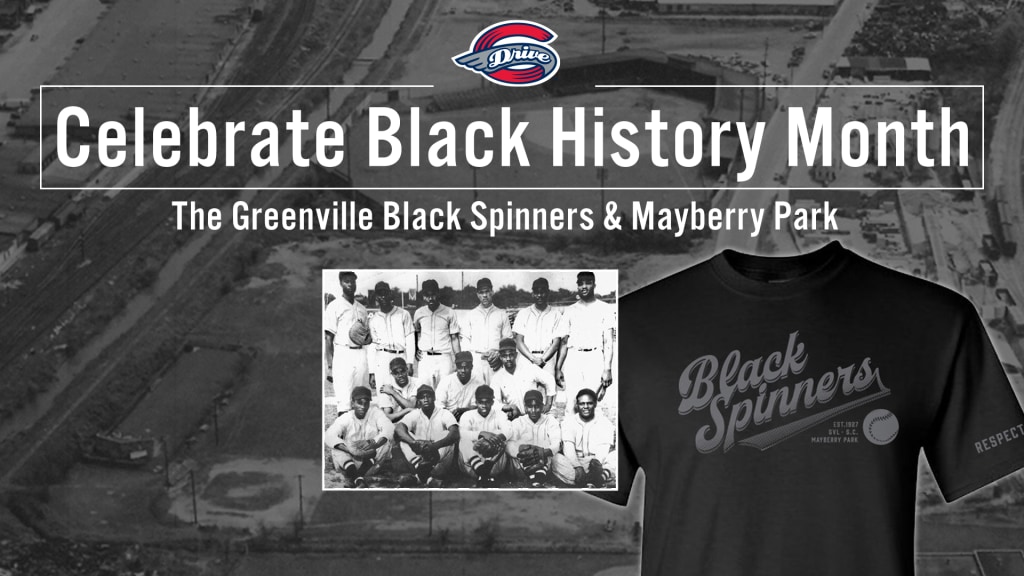
 Greenville and the Upstate region has a rich baseball history. Everyone knows the stories of “Shoeless” Joe Jackson and others, including Tommy Lasorda, Nolan Ryan, and Jim Rice. However, the lesser known stories include the Greenville Black Spinners, St. Anthony’s, and Sterling High School – teams that also utilized Mayberry Park and Meadowbrook Park.
Greenville and the Upstate region has a rich baseball history. Everyone knows the stories of “Shoeless” Joe Jackson and others, including Tommy Lasorda, Nolan Ryan, and Jim Rice. However, the lesser known stories include the Greenville Black Spinners, St. Anthony’s, and Sterling High School – teams that also utilized Mayberry Park and Meadowbrook Park.